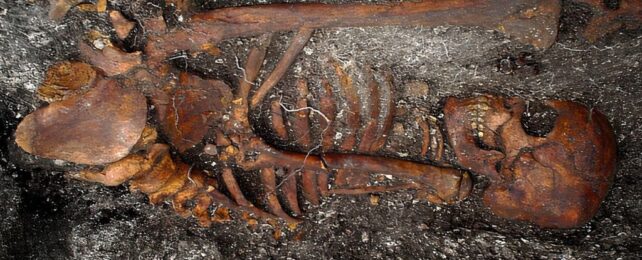In 1493, the Italian explorer Christopher Columbus returned to Europe after his famous journey to the Americas.
Just a year or two later, a plague broke out among French soldiers in Italy that quickly spread to other parts of the continent and came to be called the 'Great Pox'.
So began Europe's first known outbreak of syphilis.
Historians have long debated where this highly contagious infection came from, and the timing of Columbus' return, along with racist and xenophobic ideologies, had many pointing the finger at the New World.
Now, an international team of researchers has uncovered the oldest case of a syphilis-like disease, and it seriously undermines the so-called Columbian hypothesis.
Genetic analysis of 2,000-year-old bones found in Brazil has revealed an ancient bacterial subspecies of syphilis, which also causes bone lesions. This bacterial species belongs to the genus Treponema, same as the bacterium that causes syphilis, but it is most closely related to another modern pathogen that causes a disease called bejel.
Bejel is a treponemal disease spread via skin contact and is not just sexually transmitted. Like syphilis, the disease can affect the skin and deeper tissues, including bone. Today, bejel is mostly reported in arid parts of Africa, western Asia, and Mediterranean regions.
The discovery of a bejel-like disease in pre-Columbian Brazil is a surprise. It suggests that while treponemal diseases existed in South America a thousand years before Columbus' arrival, they were not the same as the venereal disease that later struck Europe.
"The fact that the findings represent an endemic type of treponemal diseases, and not sexually transmitted syphilis, leaves the origin of the sexually transmitted syphilis still unsettled," says environmental scientist Kerttu Majander from the University of Basel.
Since the early twentieth century, historians and scientists alike have argued over where syphilis came from, and even to this day, the debate continues to center around Columbus, despite the specious beginnings of the hypothesis.
In recent years, some scientists have started to find genetic hints of syphilis in the bones and teeth of Europeans that lived long before Columbus, though some experts have been unconvinced by these discoveries.
Part of the problem is that syphilis and other pathogens in the Treponema genus have really similar manifestations when they infect humans, which can be easily conflated without genetic analysis. Reliable dating of human remains has also been an issue.
The current study in Brazil makes up for both those limitations. Finding an ancient bejel-like disease in a humid area far from the arid homelands of its modern counterpart suggests that the earliest treponemes were widespread and able to adapt to various climates and geographic locations.
Some human bones found in a Mexican cave show lesions like syphilis that date back 9,900 years. Perhaps they were also caused by a bejel-like disease.
As it turns out, the origins of syphilis may not be confined to just one place or one time. Perhaps that first outbreak in Europe was due to a mutation in a treponeme that had existed in that area or nearby for millennia.
"As we have not found any sexually transmitted syphilis in South America, the theory that Columbus brought syphilis to Europe seems to appear more improbable," explains archaeologist Verena Schünemann, who used to work at the University of Zurich.
The team hopes others will continue their work by investigating ancient bacterial DNA in other human remains found elsewhere on the continent.
The study was published in Nature.
